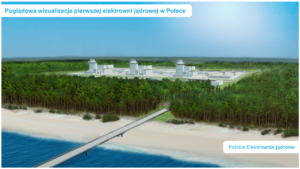Polskie Górnictwo Naftowe i Gazownictwo has developed the Integrated Field Management System which will optimise the Company’s production activities. In addition to improving operational and financial performance at home, the new tool will support PGNiG’s expansion into foreign markets.
The exploration and production process involves, among others, geologists, reservoir and production engineers and economists. In each of these areas, different software and data sets are used, which hinders smooth collaboration. These difficulties are solved by the “Digital Field” platform, which integrates the results of the work of specialists from different disciplines into a single reservoir model. Such a model, covering the entire production process, allows, among other things, to simulate different extraction scenarios from several fields at the same time, increase the accuracy of forecasts, optimise the drilling program, analyse the effects of planned investments (CAPEX) while optimizing energy consumption (OPEX) and supply chains.
‘”Digital Filed” is a tool that will enable PGNiG to use its oil and gas resources even more efficiently. Integrated deposit management at the exploration, exploitation and investment stage will contribute to improved recovery and extended field life while keeping down production costs and ensuring better return on investment in production’ explains Piotr Woźniak, President of the Management Board of PGNiG SA.
The benefits of the system are demonstrated by the results of a pilot implemented at the Załęcze field, which has been in production for over 40 years. PGNiG used the tool to analyse various scenarios for gas field upgrading. This allowed for the selection of the optimum investment option, which resulted in an increase in the estimated recovery from the field by 800 million m3 of natural gas. In turn, the increase in the expected production volume translated into an improvement in the economic efficiency of the investment itself as the NPV (net present value) in the option selected with the aid of the “Digital Field” is over 200% higher than for an investment designed in a traditional manner.
PGNiG’s representatives stress that the effects of system implementation will vary from field to field, but in each case the application of the platform will lead to the selection of the best deposit management strategy and optimisation of its production parameters.
‘Poland is not particularly rich in hydrocarbons, which is why we must make good use of the resources at our disposal’ says Piotr Woźniak. ‘Moreover, this is a global trend, which is also visible in places where oil and gas are abundant. Therefore, the “Digital Field” will also help us in the implementation of our oversees endeavours, as we combine our knowledge and experience with a modern tool that increases the attractiveness of PGNiG as a partner in concessions.’
Ultimately, the “Digital Field” platform will be used for production management in all the PGNiG Group’s exploration and production projects at home and abroad. However, the priority is Poland where the Company operates on over 2000 wells at more than 200 fields. The next stage of implementation will be the construction of an Integrated Database, compatible with the system, gathering all geophysical, geological, mining and financial information related to production activities. The database will significantly shorten the average time of data acquisition needed to create reservoir models. PGNiG is currently working on a pilot version of the system integrated with a database.
PGNiG








